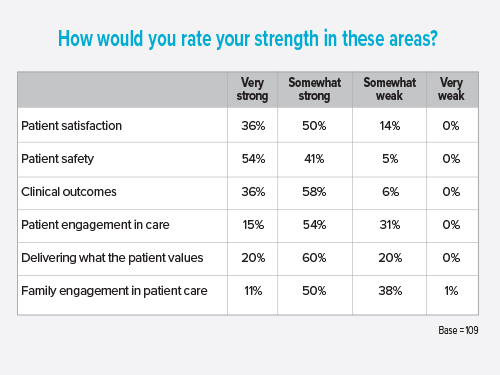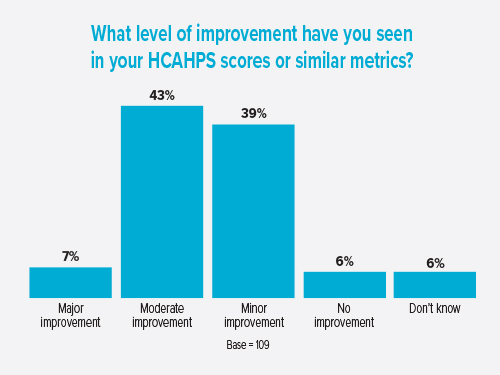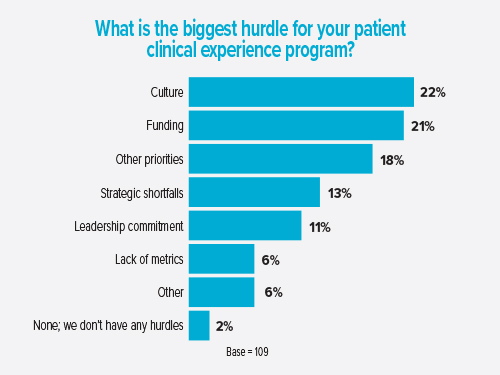Healthcare executives offer insights on strengths of patient experience programs, performance in HCAHPS scores, and barriers in patient experience efforts.

After shifting away from an emphasis on patient experience during the struggles of the COVID-19 pandemic, health systems and hospitals are renewing efforts to ensure their patients have a positive experience.
A recent HealthLeaders Intelligence Report, "Reengaging the Patient Clinical Experience," surveyed more than 100 healthcare executives about the strengths of their patient experience programs, performance in HCAHPS scores, and barriers in their patient experience efforts. Here's three things the survey taught us about patient experience in 2023.
Exec confidence in patient safety is high, but engaging family members in care needs work
When asked about their organization's strength in areas of patient experience, combined survey responses of "very strong" and "somewhat strong" highlighted four areas, including patient safety (95%), clinical outcomes (94%), patient satisfaction (86%), and delivering what the patient values (80%).

But William Worrell, CEO of United Medical Centers (UMC), a federally qualified health center based in Eagle Pass, Texas, and advisor of this Intelligence Report, says that hubris could be playing a role in the responses.
"Sometimes people value themselves a little higher than they may actually be," he says. "With patient safety, there's always issues that arise and we can always improve."
The biggest area of improvement among respondents is family engagement in patient care, for which more than one-third of respondents (38%) graded themselves as "somewhat weak."
Worrell says family support for patient care is always a challenge but is critically important to clinical outcomes.
"If you're not having family to buy in to change lifestyles, you're not going to change that patient," he says.
At UMC, Worrell says UMC started healthy eating classes for patients with diabetes and their families "to help get them all onboard, and that's helped a lot."
HCAHPS scores only saw moderate improvement in 2023
Eighty-two percent of respondents report either moderate (43%) or minor (39%) improvements to their HCAHPS scores in their efforts to boost patient experience, with only 7% claiming major improvements.

Worrell says the pandemic was "horribly disruptive" for UMC because physicians were missing vital contacts with patients for preventive care such as mammograms and other cancer screenings.
As for the 7% of respondents who reported major improvements in HCAHPS scores, Worrell says "that's pie in the sky. I don't think they saw that."
Avoid the 'cattle call' and find the funding to boost patient experience
When asked to identify the biggest hurdle for their patient experience program, 22% of respondents cited workplace culture, 21% said funding, and 18% said "other priorities."

At UMC, Worrell says culture includes "a smiling face at the front desk."
"It's the push for the employee to help the patient all the way through their experience and avoid that feeling of a cattle call," he says. "You want the patient to feel like their needs were met and everything was to their liking and [you are] trying to help them."
As with everything else in healthcare, Worrell says funding is also a significant barrier.
"The more funding you have, the more you can focus on clinical outcomes," he says. "But labor costs and everything else have gotten so high that funding is a necessary evil."
Read the entire survey report here.
KEY TAKEAWAYS
A 2023 HealthLeaders survey of healthcare executives found that provider organizations reported high levels of strength in these patient experience areas: patient safety, clinical outcomes, and patient satisfaction.
Eighty-two percent of survey respondents reported either moderate (43%) or minor (39%) improvements to their HCAHPS scores.
Survey respondents cited workplace culture and funding as primary barriers to improving patient experience.
